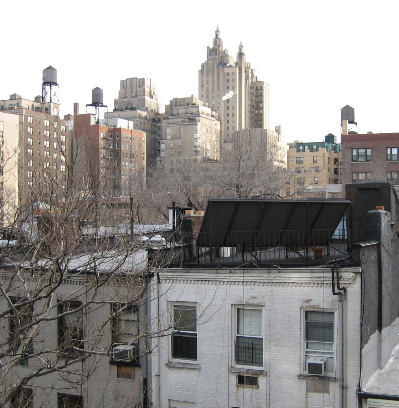Green building is gaining a small foothold in American homes. Although mega-mansions and their wealth status are popular in many subdivisions, some environmentally conscious homeowners are no longer satisfied with consuming energy for the sake of showing off. Conserving the environment while making a home more energy-efficient, using alternative energy sources, as well as building with reclaimed materials is gaining in popularity. And now some states even help the greening of homes by offering attractive tax credits and incentives that offset some of the costs of materials and installations. Creating or restoring a home into a clean-energy-efficient one also creates less of a dent in owners' wallets each month. This perk, along with creating less of a carbon footprint, are enough of an incentive for owners who have already gone green.
Reclaimed building materials
Buildings, houses, and barns are demolished everyday, and many of the materials used for these buildings are still perfectly good to use. Second-hand goods are cheaper in every market and, by reusing these goods, it also keeps them out of landfills and creates less destruction of nature for manufacturing. Reusing building materials such as bricks, tiles, and flooring is an attractive way to help your home become green. And, in turn, home restorers can also recycle their old materials. There are companies that specialize in recycling and reclaiming building materials from demolished or renovated residences.

Solar power
With energy costs creeping higher and higher and energy resources dwindling, alternative and clean energy sources are gaining a small momentum with homeowners and businesses. Certain states such as California, New Jersey, and New York offer rebates and excess-energy buyback programs that, along with federal tax credits, can offset the cost and installation of solar panels. Depending on the state and program, most actual payback times — the amount of time that your out-of-pocket costs versus zero-energy-costs merge — can be as little as 10 years. Most solar panels are hooked up to a battery pack or generator that store excess energy to be used when the sun isn't out.
Indoor energy efficiency
Using less energy to begin with will make your house green. It starts with proper insulation — this keeps the house warm in the winter and cool in the summer. Some green builders have used hay as a natural insulator. Ceiling fans use much less energy than air conditioners and, in the winter, the fans can circulate the hot air that rises to the ceiling. Installing florescent energy-saving light bulbs cuts down on energy consumption and the bulbs also last much longer than traditional incandescent ones. Saving water is becoming a big concern, so dual-flush toilets, which use more or less water depending on the need, are a good alternative. For more on how to save energy around the home, check out my post How to fight global warming, use less energy.
Natural aspects
Not all green building has to do with the house itself. In the summer, a big tree over the roof of your house provides natural shade for cooling. Installing a bucket to catch rainwater is a good way reuse it to water the lawn. Planting the garden with native plants that don't require a lot of watering also makes ecological sense.
Your home is one of the most expensive investments you will ever purchase. Most anyone can easily do a few things around their home to make it green. The next time the energy bill comes around, think about simple solutions to bring down the bill and in return help the environment.
keeping the earth ever green
For more on green building check out the excellent "Austin House Project" series on "This Old House."
- Follow us on Twitter: @inthefray
- Comment on stories or like us on Facebook
- Subscribe to our free email newsletter
- Send us your writing, photography, or artwork
- Republish our Creative Commons-licensed content

